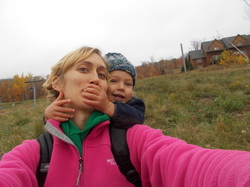 [Disclaimer. My 20 month old son cannot write or talk. I am the only one that can translate his baby babble and this is the result. This is his race report from his first race ever (Sugarloaf Kids Hill Climb)]
So, I didn't plan on doing this! Just so you know, my parents brought me up to Sugarloaf Mountain and I was content running around and getting in the way of 'Sugarloafers' wandering around the village and basically making a general CF of things as usual. It was my intent to throw rocks in innapropriate locations and make eyes at 5 yr old girls, but my parents had other ideas for me this weekend.
It wasn't enough that they took me away from my home, where I had been making progress playing with my new blocks and spelling ingenious new words with said blocks. My weekends' plans were to rip out the lower level of books on the bookshelf and dump over the dog's water bowl for the 15th time this week, but no...my hippie parents had another idea. These idiots thought it would be a good idea to drive up to the western mountains of Maine to hang out at a ski mountain.
We've already climbed this bastard of a mountain twice this year (Ok, I was in the pack on dad's back) but it was cold and windy both times, and I wasn't happy. Of course now, they decided to go for a race.
Obviously, Mom's OK, she's tall, blonde, beautiful and generally gets me what I want, but dad's a poser! He's a podiatrist (i.e. not a real doctor) and somehow thinks he's a good trail runner. I love him, but I'm tired of his nonsense already. I was thinking that, for the 4th or 5th time this year at his "races," that this jerk would head out on the trails and leave me and mom some quality time together running around the slopes of the mountain, which is like my favorite thing to do!
Anyway, an hour before pops heads to the start line, they put me down next to a bunch of well-rested under 6 year olds (hey, I didn't spend last night in a 400K slopeside condo, my parents, Joe Cocker and Janis Joplin, parked their camper on the side of the road at the Appalachian Trailhead, on a 10 degree right lean angle, where I constantly rolled into the side of the cold-ass upper windows all night!)
So the gun goes off, which scares the living shit out of me, and as these idiots run up the slope, I'm not too sure what to do! Do I follow these kids? Do I cry and head back to mom (which usually works), or do I just do my thang, which entails doing whatever I decide to do. There are arrows directing me along this course, but I'm not in the mood to listen to the man, like usual. The grass looks wicked high and I see a preferable course below me. Of course, mom and dad are nearby and help me through in the "right" direction. After a few short spurts of running, I come to the supposed turnaround. This is a race? This is only like 50 meters. At this point, all the other kids are across the finish line, but I refuse to believe a race is this short. Especially one called a "mountain race." This damn thing turns around instantaneously! Obviously, I decide to revolt and head up the mountain and ignore the societal constraint of the "race." But there's mom and dad, grabbing me and pulling me downhill. What "free" nature lovers they are, forcing me to follow the preset course. 1-2 minutes later there I was, at the finish line, nearly pushed down the slope by my dumb dad. As I cross the line, "Tammy tights," hands me a "finisher's ribbon," and I wanted to say, hey, chill out, I'm last, lady! By like 5 minutes! But her smile is intoxicating and i wave to her instead.
Mom and dad are way too overexcited and take a picture of me with my loser medal (but hey, I was the first kid under 3 years old!) and suddenly I'm hungry. I'm feeling like a lara bar. Time to go throw some damn rocks.
We need cushioning, and support, don't we? With our shoes and with our heads, in athletic endeavors, protection is key, or is it? Head trauma in sports is a given. In american football, much science and development has been put into the helmet, which hasn't decreased rates of concussions and traumatic brain injury at all. Does this sound similar? The same development and research has been applied to shoes (especially running shoes), but this hasn't decreased the rate of foot and running injuries. Like orthotics, supportive shoes and cushioned mats have become the norm in workplaces, and we haven't seen overuse injuries in the lower extremity decrease either. Why is this?! A football helmet may decrease the perception and immediate result of high impact forces, but it doesn't decrease the rate of injury. The same can be said of shoes. The key is that the helmet decreases the perception of injury rate and mitigates the immediate result. The same can be applied to shoes. An obese person can walk with horrible form on the hardest man-made surfaces for months and possibly years with no ill result, but the cumulative impacts of this are comparable to head shots to a boxer or years of hard hits to a football player in a helmet. It is not until soft tissue damage is at a chronic and nearly irreversible level that people take notice. When the typical overweight modern man walks barefoot, he can barely tolerate it. Though he can almost certainly remember a time in his childhood when this was not the case. If you ask a football player to take off his helmet and make the same hits without it, he could not possibly fathom doing so. The idea is the perception of safety that helmets (and shoes) creates. Even with shoes, the impact is still there with our feet, and we exacerbate that with poor mechanics and increased body weight as well as poor walking surfaces. Wearing a helmet and taking repeated hard hits to the head may not initially feel traumatic, but it certainly is in the long term. Wearing a comfortable shoe that initially mitigates the effect of footstrike, that makes us complacent and comfortable in the short term, will end in poor form and overuse injuries akin to head trauma in football players. Going barefoot or in minimal shoes will naturally cause us to focus on form and movement patterns that mitigate the effects of overuse trauma. Big bulky shoes may initially protect us from this trauma, but they also make us complacent allowing for massive weight gain and poor movement patterns that exacerbate this impact over the long term. We are products of evolution. We did not evolve to live in a world of endless food. We did not evolve in a world of concrete and couches. These are the denizens of modern medicine. We ignore this because money and drug companies are the drivers of modern medical research. Biology and evolution should be the drivers of medical research. If you continue to rely on drugs and orthotics, many modern diseases and foot ailments will continue to be the bane of your existence. If you begin to look at these problems in an evolutionary perspective and understand that your own health takes work on your part, you will find answers and solutions.
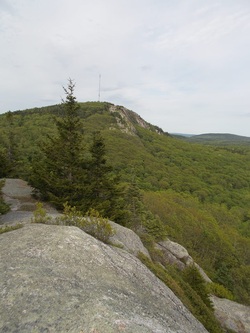 Of course, this is my opinion. Please debate thoroughly. I am also relatively new to Maine and can take being put in my place. Please comment with your favs!!
1. The closest trails where I can get the biggest elevation gain, brilliant views and constant challenge: Big and Little Chick Hills (big and little Peaked mountain in other guidebooks) I routinely do a 2.5-3 mile loop that goes up little chick, then up the beautiful, exposed ridge of big chick, then down the access road to the parking lot. I'll usually do 1-3 laps here. 1 lap is approx 2.75 mi with 1200' elevation gain, lovely views and great practice on the powerhike uphill and steep, gradual 1+ mile downhill (picture: looking at big chick from little chick hill).
2. Kinda far away, but world class: Acadia National Park. Approx 45 mi down the road, there is some of the best trail running, hiking and climbing in the USof A. This is where I get the majority of my 'home' long trail running in. I can easily do a 20+ loop with 5000+ elevation gain within 30 mins of home (45 mins of bangor area). Most of the north-south trails are highly runnable, while the east-west trails have big elevation gains in short distances, due to the geology of the mountains here (picture: summit of champlain looking northeast)
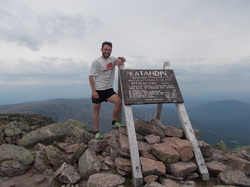 3. The crown jewel of Maine: Katahdin and Baxter State Park. Despite the strict regulations here, you can get some major 4 season action at BSP. With a huge prominence, the area surrounding Mother Mountain of Maine is relatively flat. Because of this, you can get significant elevation gain in a relatively short run. The Abol Slide trail is the perfect slope for a Vertical Kilometer world race. Above tablelands, the peaks of baxter, south, pamola and hamlin are all well above treeline with the most breathtaking views in the northeast. Only the presidential range of the White mountains challenges.
4. The after-work go-to. This seems ho-hum, but the Kenduskeag path weaves along the mighty Kenduskeag stream an in the steep canyon it creates. Thoreau himself spent much time in Maine, focusing on the north woods and Katahdin, but he lived with his family in Bangor and walked daily along the banks of the Kenduskeag, appreciating its beauty in a way that only he can. John Muir espoused the Sierra Nevadas, Thoreau espoused Maine. Take an after work run along the 1.5 mile kenduskeag path a few times. (Disclaimer, there are loads of sketchy characters near downtown--not sure if Thoreau experienced this as well, hmmm--run with friends or in the daytime with pepper spray, or just give such crazy looks that those characters won't want to mess with you)
This is tied with Bangor City Forest, which is also easily accessible. There are plenty of trails in here. While relatively, flat, it has its variety of mildly technical trails and flat gravel paths for the beginner. Make sure you know your way around, because it is a maze, even though it is relatively small! 5. Great Pond Mountain Wilderness. A wonderful secluded section of land in Orland/Dedham. There are several small mountains just under 1000' that you can summit, but the vast, vast majority of hikers/runners sticks to the valley path and small spurs that are doubletrack gravel. You can easily do 20 miles here never covering the same ground twice. I love this area, though I swear I did encounter a Mountain Lion on East hill. I thought it was a bobcat, but my 35 lb, 2' tall border collie sniffed her out in the tall grass at the summit. The creature stood up and darted back into the woods. I only got a quick glimpse, but the animal was cat-like with short hair and sandy colored and at least 3x the size of my dog. I have no doubt it was a ML and have no doubt that I was probably the first human up there in 6 months. Believe what you want, but I'm pretty freaked out to go back up there alone. Still, hahaha, this is a great place!
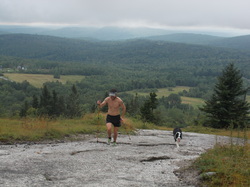 6. Bald Mountain, Dedham. The site of an old Alpine ski mountain, bald mountain seems small and unassuming, but its prominence rises nearly 800' in less than 0.6 miles. This is my area of steep hill repeats, typically on the 'road' to the summit, which is used by hikers and maintenance crews of the cell towers. There are multiple other trails surrounding the mountain, and in the winter, it is a fantastic place for backcountry skiing.
7. Ellsworth City Forest. I've never run on such newly made trails. This is a wonderful, empty place. There is not much mileage to be obtained here and many of the trails are constantly wet, but the inner trail that passes along Branch lake is beautiful. You'd think you were the only person on earth. Not a camp to be seen on the lake in this area and in the 50+ times I've run through here, I've yet to experience the shores of this lake with another person. In all, there is approx 7-8 miles of singletrack and doubletrack trails, much of it wet and relatively flat, but beautiful and secluded. Shhhhhh, don't tell anyone else.
Please respond with your own Bangor area trail gems!! I've only been here a short while, but I have a knack for finding out trails in remote and urban locations. I will lead some laid-back trail runs in the near future in these locales through GrassRoots! but let us know of others that you would like to lead!
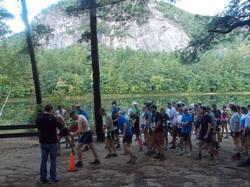 An end of the season race. So tired. So so tired. I had planned on doing the "beast of the east" 14 mile race, but opted instead for the 5 mile "classic" race. We had 4-5 hours of driving to get home after the race, which started at 10am, and the family sentiment was, the sooner we got home, the better. I could've just run the 14 miler fast (haha), but I don't think that would've been any faster than 3 hours. I knew the 5 miler would've brought me to the finish line in 1 hour or so. So that was the plan.
Quentin Tarantino it back to Friday night--we headed west toward our sacred White mountains around 830pm. My wife, 19-month old human baby and 13 month old border collie baby left under the shroud of night. Our destination...the Farmington, ME Walmart. "Just park by the Burger King!!" the manager exclaimed. "You can't park near the entrance!!!!" Little did she know, I love parking 1/4 mile away from the shopping centre. "Oh, we, will," I assured, excitedly!
We pulled in around 1030pm and after tag-teaming bathroom breaks in the Wal-Mart (because the camper is already winterized for the season), we settled in for our slumber, which was interruped every 45 mins by ford f-250s and chevy 1500s peeling into the parking lot for a late-night something-or-other. We survived the night, and after an early-morning shopping spree of milk and more milk, we headed westward on the serpentine Route 2.
By early AM, Denny was sick as shit of driving and even more upset that we had the cahones to cross into New Hampshire. We decided to make a stop in Gorham, NH, certainly the most under-rated town in the state. We did some swings and some playground action, and chilled in the northern shadows of the Presidential range of the White Mountains. We then headed south on 16 to one of the centers of white mountain activity, Pinkham Notch. From here, we embarked on a half-day hike to Tukerman Gorge, the epicenter of northeast backcountry skiing. Lindsay fared well and we hiked the 6 miles up and back in a little under 4 hours. We chilled for an hour or so at the hermit pond lodge with other hikers (primarily Quebecquois) on their way to and fro. Denny got to stretch his legs and run around, while we (me) spoke awkwardly in broken French to les Quebecqois, who didn't appreciate my slaughtering of their language, but sportingly took a family picture of us.
Anyways, we scooted back down and we headed down the valley to the premier restaurant of New England: 99 Restaurant in North Conway. And since the Red Sox won the night before, kids eat free; so we ordered a meal for Denny that we could snack on, without regards to his nutritional needs. After munching on much-deserved meals from our 6 mile hike/fast, we then began our quest to find a parking spot for the night. This would prove to be a much more challenging feat than the hike. North Conway village is more attuned to preventing overnight parking than child kidnappings, so we were turned away at the 50 acre empty, desolate, remote parking lot at Cranmore mountain. My superhuman wife may have prevented several acts of public disservice here for free, but, yea, they scoffed at these American knackers and pointed us elsewhere.
Thus we headed for the seclusion of the mountains, like moonshiners and rapists of yore. 12 miles up route 16 we parked in my "last resort" campground, plan #4, the overflow lot of Pinkham notch, where we had hiked just several hours before. We parked at 630 pm and it was pitch black by 7pm and raining vigorously, so we had no choice but to sleep! The natural cycle of day and night is a beautiful thing and we took great heed; sleeping by 8pm is what nature intends when the sun is set! Aside from an unnamed baby waking 5-6x and significant rainfall and wind, we basically slept until 7am, when we set southward to Echo lake for the main event.
Not wanting to monopolize the entire day, I decided to drop from the 14 mile to the 5 mile trail race. This was a good choice, as I later found out, because I could eat a burrito, win a few prizes, and head homeward in the time it would take me to get to mile 9 of the 14 miler. (why would I ever do a long race again!!)
The day was supposed to be terrible; the forecast was for more grizzly weather like we had endured in our camper, Explore, the night before, high on the mountain pass at Pinkham notch, but yea, this was not the case. The clouds broke and Whitehorse and Cathedral ledge stoodfast in our presence with a breathtaking view. Still, haste was the goal, and the 5 mile race I did.
The course was beautiful--even though I had hiked most of the running route over the years, running it was different, primarily because it was faster. Only science will tell why this was the case.
Anyway, I took off fast, 6-7 min miles towards Cathedral ledge, where the literal ledge forced me to powerhike. At times, like I am known to do, I literally climbed on all fours. No one else I've ever known in a trail race has done this, but I assume, due to my large ears and upper limbs, my genes link me that much closer to our hominid cousins, the apes.
As fast as my ape-like body could carry me, the first female caught me at mile 3. And though my simian features carried me swiftly up the steep slopes of Whitehorse ledge and quickly down the red ridge trail, my bipedal gait was no match for Alison. (I know her name because I took the time to schmooze on the downhill. Strategy, folks, strategy.) Unfortunately all that talking tired me out, so my strategy didn't work at all and she turned on the turbo as the trail flattened over the last 1.5 miles, leaving me to scurry in for 3rd place overall.
The only reason I was 2nd male/3rd overall was because of the lack of participation in this wonderful trail race, which shouldn't be the case!! The course is perfect--none other is as great in the northeast for a 5 and 14 mile course. The prizes excellent, the race directing superb (Acidotic racing, always a winner!) and the charity brilliant (Kismet foundation http://www.kismetrockfoundation.org/) which introduces kids to the world of climbing and mountaineering, who would otherwise never have the chance. It is near and dear to my heart since my father used to provide the same experience to kids in a coastal community on Long Island, NY by giving them the opportunity to sail on his own small boat. This may not have made them sailors, but certainly it opened their eyes to a world beyond the streets of their own small town. In all, it was a wonderful trip and race. I'd love to do the long course next year, and I'd highly recommend it to any runner!
18 May, Saturday. "Reality Sets In" My friend Kevin Murphy met me in the White Mountains of NH to recon the ascent trail I'm planning on using to get above treeline when I attempt to run the Presidential traverse in 2 months. 4100' feet of climbing in 4 miles. Not much running on my part. The idea slowly set in that after that climb, in this traverse attempt, I must do 6-7 more peaks at that same pace or faster, was sobering to say the least. Was not discouraged at the end of our run, because I was way too tired. 9 mi, 4300' elevation. 3:55
23 May, Thursday. "9th Anniversary of my Dad's death" Never an easy day, but I always try to meditate on the fact that for the last 3 years of his life, my dad loved running and fitness. He was a ripped 54 year old man that loved life, literature, his family and his students and always 'carpeied the diem'. I enjoyed a low-key, easy run in the city forest trails with my border collie. 4 mi 125' elevation. 0:34
24 May, Friday. "Take Advantage" We were supposed to head down to Long Island for the weekend, but Denny was sick. It was raining heavily. I decided to hit the gym for a workout. Typically, I hate this, but I've come up with a great mountain running indoor workout. Warmup: 25-50 pushups. Torture: Treadmill rockwall at 0 or overhang at a tough pace for 100-300' (usually 5-15 mins) Continued torture: 20 mins treadmill: 5 min warmup on even level. 15 min 15 deg incline, at either 1 min run/1 min walk or 2 min run/1 min walk. 5 mins slow run on even level.
26 May, Sunday. "Flatlander mountain running" We decided to continue on down to LI on Saturday and the following day, I had a great workout with family and friends on my beloved beach. In the absence of mountains, I used to train on the 150' dunes on the LI sound. A retro workout for me, that brought me back to my high school days, we ran 1 mile on the beach to the dunes, did as many climbs as possible in 20 mins and returned. An all barefoot workout! 2.6 mi 350' elevation. 0:55
27 May, Monday. "Quickie" I'm never usually good at the quickie workout, but with lots of family visiting and time, I knew I wasn't going to have time to set aside for a long run this weekend. Luckily, my brother Ryan lives right down the road from access to the 125 mile long Paumanok path that runs from Rocky Point to Montauk through the beautiful eastern LI pine barrens. Saoirse and I did a 2 mile tempo run, and it was strange not to run up hills higher than 10 feet. 2 mi 30' elevation. 0:14
30 May, Thursday. "Denial" Thinking for 3 days that I wouldn't catch the horrible chest cold that enveloped Denny and Lindsay, I began to get sick. I did a woefully pitiful run in the Ellsworth city forest. 2.5 mi 75' elevation. 0.35
31 May, Friday. "More denial, this time in Hell" At 95 degrees in Eastern Maine and a full on raging chest cold, I decided not to rest and went for a time trial attempt on Bald hill in Dedham Maine. Bad idea, but did shockingly well! 1.3 mi 600' elevation 0:14
1 June, Saturday. "Giving in....kinda" I realized I needed rest. It was time to recharge and give up the long run for the weekend and focus on healing. Somehow this turned into me talking Lindsay into a 3 mile steep hike on Schoodic mountain with Denny in the carrier. Another 90 degree day. We went SLOW. The 2 of us could barely breathe and we took many stops to blow snot rockets, but we took our time and were rewarded with 360-degree views and wonderfully cool breezes at the summit of the 1100' mountain.
2 June, Sunday. "Acceptance." I lay down on the couch all day with small spurts of getting up to help with Denny's shennanigans.
4 June, Tuesday. "Sorta feeling better." After work run up Little and Big Chick hills. Short and steep ascents and a quick descent back on fire roads. First real elevation gains since the White mountains. Ouchy, but not too ouchy. Ascended both little mountains in 30 mins with a few wrong turns. Things are looking up to increase the distance and elevation gain this weekend . 3.25 mi 1200' 41:00
Following are some pictures from some of those training sessions:
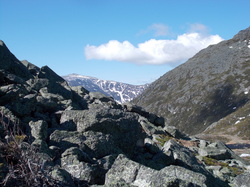 I run almost exclusively on trails; I hate running on roads now for any length of time. Not everyone has the luxury of doing this on a daily basis, but you may have trail gems in the large city you live. The only actual cities I've ever lived in were Miami, FL and Worcester, MA. In both, I regularly ran trails. At Barry university, there was a 1.5 mi dirt path around the entire campus, as well as the trails in Oleta River Park. In Worcester, I ran 5 minutes down the road from St Vincent Hospital to access over 8 miles of technical hiking trails that connected Christofo Columbo park on Shrewsbury st with Green hill park up on Belmont. As a visitor, I've experienced trails within a few miles of urban centers in Phoenix, AZ, NYC, and Boston. You just have to look!
What I love most, though, is running hiking trails in mountains. This fascination began in college in the Adirondacks. Oftentimes, there is little in the way of running going on as you face traverses, scrambling and near vertical climbs, and fields of boulders. The idea is to move quickly, efficiently and safely across these environments. And while standard runners may not like the disruption in running, you can experience natural human full-body movement patterns. Scrambling, climbing, jumping, are movements ingrained in our ancestral instincts, but not experienced in our suburban 5K loop.
We had the chance last weekend to get over to the White mountains again, where I hope to take a stab at running the Presidental range traverse later in the summer. My friend Kevin and I scoped out one of the ascents to the traverse that the current record holder took, the Daniel Webster Scout trail. Running here is a relative term. The trail ascends over extremely rocky and rooty terrain for 4100' in 4 miles before hitting Mount Madison, the first in the north-south presidential traverse.
We had near perfect conditions on this trip, and I can only hope to have something similar when I return in 1-2 months. Like always, a trip to the mountains lends to spiritual growth and mental decompression through meditation in movement and mindfulness in the simplicity physical challenge.
That experience doesn't always have to come from a big mountain range; if that mountain is a hill in your small city or a dirt path along a chain-link fence, try running on a more natural surface!
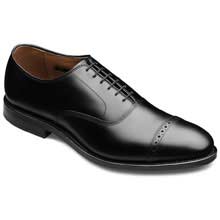 Just like the Standard American Diet has become known as the antithesis of healthy eating, I propose that the Standard American Footwear should also be known as the antithesis to healthy feet. There is no medical research to show this; obviously the shoe companies aren't clambering to do good research that may eradicate their own products. Shoes in the developed world have been a result of fashion, and certainly not function. Modern walking surfaces were created to promote industry and cleanliness and took no consideration on the interaction of the human limb with its surface. Western footwear promotes musculoskeletal imbalance from their high heels and tight toeboxes. Western walking surfaces and daily movement patterns also encourage musculoskeletal imbalances. Sitting in chairs 40 hours per week or walking on hard flat surfaces are very unnatural musculoskeletal patterns. So if you do partake in a piece of SAF, do it infrequently. Recognize that your foot is another body part to strengthen and challenge. There's no magic shoe for foot pain, like there is no magic pill for good health. For every part of the body, exercise is key!
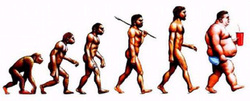 Once upon a time, cardiologists looked at exercise like they now look at poor diet. Don't exercise!!, it'll send you to an early grave. Orthopedic physicians did the same with arthritis: Don't move!!! It'll hurt. We now know just the opposite for both. Studies show exercise prevents cardiovascular disease and those that are the most active have the least poor outcome from osteoarthritis. (That doesn't stop naysayers or the media ever pointing out the rare fit person dying from congenital heart problems or exercise induced cardiac events, but not the thousands dying daily who have never made an attempt at making a literal step in the right direction. In full disclosure, my own father found a new, very fulfilling life in being fit--eating healthy and exercising regularly, but nothing could stop the 15+ years of coronary disease from being stationary and eating extremely poorly, and partly from having genetic predisposition, from causing his exercise-induced death.) What medical researchers study is disease, not health!! Our treatment protocols are structured on what we know of disease; of the average sick person. We tend not to look at healthy populations and what they do right.
In my profession, we do the same. Podiatrist see foot problems. Where are there foot problems? In Western society. Where was the first podiatrist? Royal Medieval England. Why? The upper class was the first to wear fashionable and ill-fitting shoes. They were also the first to wear shoes full-time. Continue 700-800 years. Where do podiatrists exist? USA, UK, Australia, Canada. What do they have in common? Ex- or current British influence. What persists? The idea that shoes are fashionable. The idea that shoes=higher class. The idea that shoes prevent communicable and musculoskeletal disease. The only thing proven in medical literature to pass communicable disease are the nose, mouth, hands and privates. Not the feet.
Beyond just shoes, we have come to decide, that bulkier shoes are necessary for human survival. 'Supporting the arch' is a tenet known to the average person. Expensive shoes are the best shoes. Why does the arch need to be supported as we now all believe? It's never been supported for millions of years. There are entire countries without arch support. Why do we need such a thing?
We've created a new world with hard, flat floors, which are unlike natural substrates. We stand for long hours. We are very unfit. Arch support does work for many people, but it's akin to encouraging a 400 pound person to sit if they are in pain; it's akin to telling a person with osteoarthritis to never move very much again; it's akin to telling someone with cardiovascular disease to never exercise.
Evolutionary biology is a fact. Not a theory, not something that can be co-taught with creationism. Different disciplines of science, especially medicine, forget this or ignore it. But in this fact of evolution, we can find solid answers to medical problems. Humans did not evolve to eat sugary foods; it's caused epidemic disease. Lineages of bacteria evolve to superbugs as we speak to avoid oblivion from our ever shrinking arsenal of antibiotics. Certain genetic lineages may have always been predisposed to cardiac disease, but exercise is not to blame, our modern lifestyle and diet is. Podiatry has come to see foot problems in the light of only modern society. In this approach, we've found treatments to make people comfortable, but not to solve problems. To solve a problem requires work. Foot problems, like cardiovascular problems and obesity, require a dilegence to return your body slowly, over time to a healthier form by changing your lifestyle. Think.Evolve.Move.Take off your shoes!
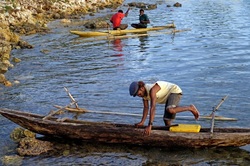 On a rare relaxing weekend that included watching television (which consists of a digital antennae that allows us to receive 4 channels here in Ellsworth Maine. Fortunately, not one, but two of those channels are PBS), I happened to come across a Globetrekker episode highlighting Papua New Guinea, with which I fell in love. Vacation huts on the beach with empty surf breaks in 80 degree water, mountain treks and cycling trips among a largely still traditional society. The host, an American, wore some type of hybrid watershoe/hiking shoe at all times. Except for one. He went fishing in a lagoon with children, all of whom were barefoot. Only one could barely walk in the water without pain. Obviously that was our host, and he was a very fit, young man. And his footsies were so tender he could barely walk on the surfaces these children were sprinting on. Most of the adults he encountered were barefoot or wearing thin sandals. I did not see a bunion among the bunch. These were some impressive feet, and this is what I hope we will embrace in foot health in America. One of the exercises I encourage my patients to perform is the "Laird Hamilton Foot Torture," which I took from an interview I read with him several years ago. This consists of plantar foot massage on a golf ball under full bodyweight. Obviously, for nearly everyone, this takes some time to work up to. This man is a rarity in western society; A person with strong feet. On a later interview with a colleague of Hamilton's, the writer expressed fascination with his ability to scale a technical mountain in flip flops. Why? Why do podiatrists whip out the cross and silver bullets every spring and summer when people start living in flip flops? They are not inherently the problem, it's your WEAK FEET! Not only are westerners feet overly weak and sensitive, they likely lie under an overweight body. This is the reason my profession only exists in countries like the US, the UK and other former colonies. It is the reason why the US military could be crippled with the lack of one item--not weaponry, but shoes. Steven Robbins, a Canadian MD, whose scientific body on the benefits of being barefoot is impressive, but far from extolled, also explains reasoning for the use of modern shoes. It began with the Middle Ages plague and the belief that disease was spread through bare feet (an assumption that remains until today with very little evidence). This lead to widespread shoe wearing. This also lead, he posits, to obesity. The shoe allows us to obviously bear more weight on more uncomfortable surfaces, though the potential for damage from those surfaces still exists. Shoes at the same time became staus symbols, and still remain so today. These ideas outweight the scope of this post, so I digress. My point remains the same from the beginning of this website: our feet are weak, and this is at least partly to blame for many foot problems. To see a young, athletic man, incapable of the simple act of walking with young children in Papua New Guinea is eyeopening. Now, someone get me a travel show on PBS, so I can study and highlight natural foot health in those currently living it!
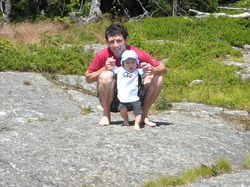 Since the last post, my family and I have completed a move to Maine, where I work as a podiatrist in a Community Health Center providing care to an underserved and rural population. It's where I first pictured myself in healthcare.
I continue to learn as any good health practitioner should and continue to experiment with myself.
As a medical practitioner completely devoted to the care and health of feet, I really find it amazing how much we take them for granted. Every podiatrist says this to their patients, but most of us do the same. When do we experience our feet like our hands?
The most common question expressed to me (and every podiatrist) is "why feet?!"
Most people are disgusted and embarassed of feet. Many even try to wash their feet quickly before an appointment.
This is the part of your body that should touch the Earth, that SHOULD be dirty. They are adapted directly to do so. They don't harbour or disseminate disease nearly as much as hands, but most people directly blame many foot ailments with that arguement. Hands are the disseminators of communicable disease, not feet!
In this direct hatred of feet, we've also come to want to "control" them with orthotics and anti-pronation devices and to place protective coverings on them to prevent disease and banish them from our sight. (Most people are more embarassed and disgusted of their feet than an absolutely horrible Hemoglobin A1c [diabetes lab value] or HDL [good cholesterol] or their own obesity. I find this a symptom of our own ignorance and as a general attitude toward health.)
As I mentioned pronation control earlier, I don't speak to banish orthotics. They truly, truly have their place, as do most modern medications. Nearly every person in the world is on one! Are all of these medications and orthotics necessitated by disease, or just lack of health! I argue, we typically know nothing of health as a population and rely on quick fixes and rationalization (which is the bane of modern healthcare) and this allows us to continue our unhealthy life, with a medication boost to win us our meager goals. We rely on modern healthcare to assuage or own weaknesses of resolve when it comes to true health and wellness. Healthcare is not the government's or doctor's responsibility; it is ours!
When it comes to foot health and wellness, we are not truly aware of what our feet are capable of until we use them to their full extent. They are marvelous structures and experiencing the world barefoot has made me appreciate my profession so much more, but also it has led me to question it, like any good scientist should!
Unfortunately, our feet are passive structures in the modern world, as are many of our minds and gastrointestinal tracts! We are fed what we see: technology-laden shoes, television stations owned by partisan billionaires, and food sent to the supermarket by profit-driven corporations.
Please, take back your feet and your health! Passivity, rationalization and fear should not be your motivators; the drive for a happier and healthier life should be!
|

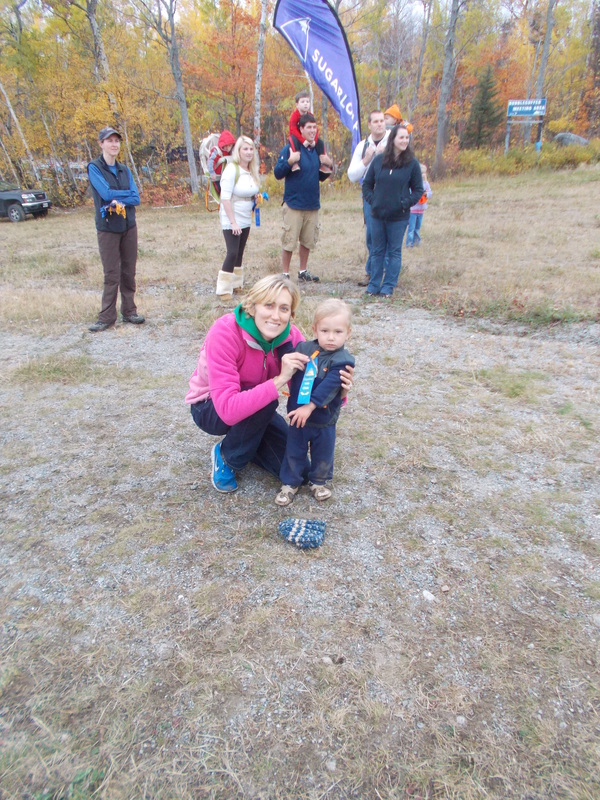
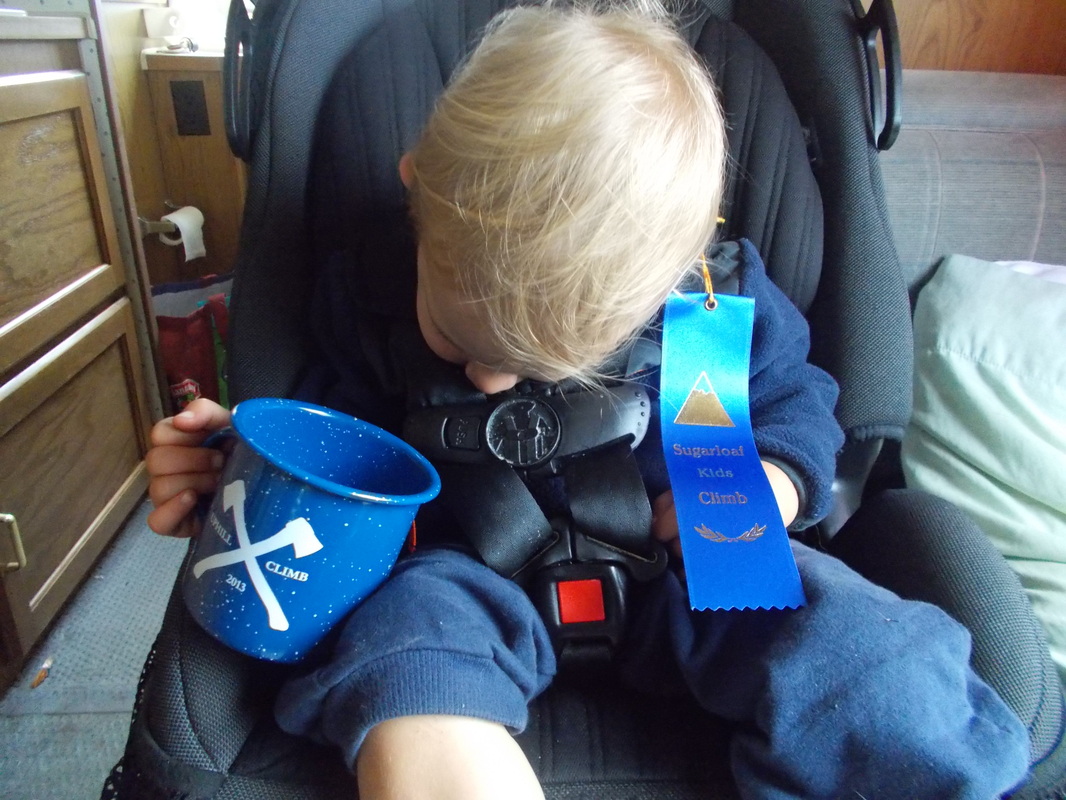

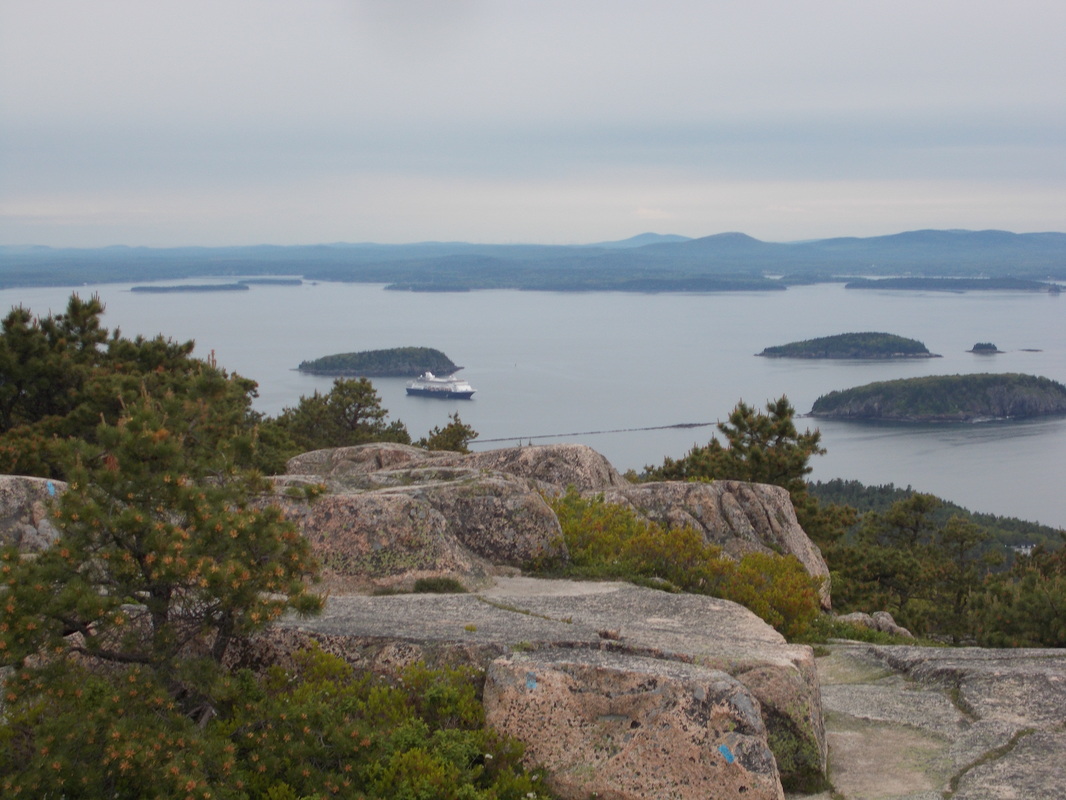

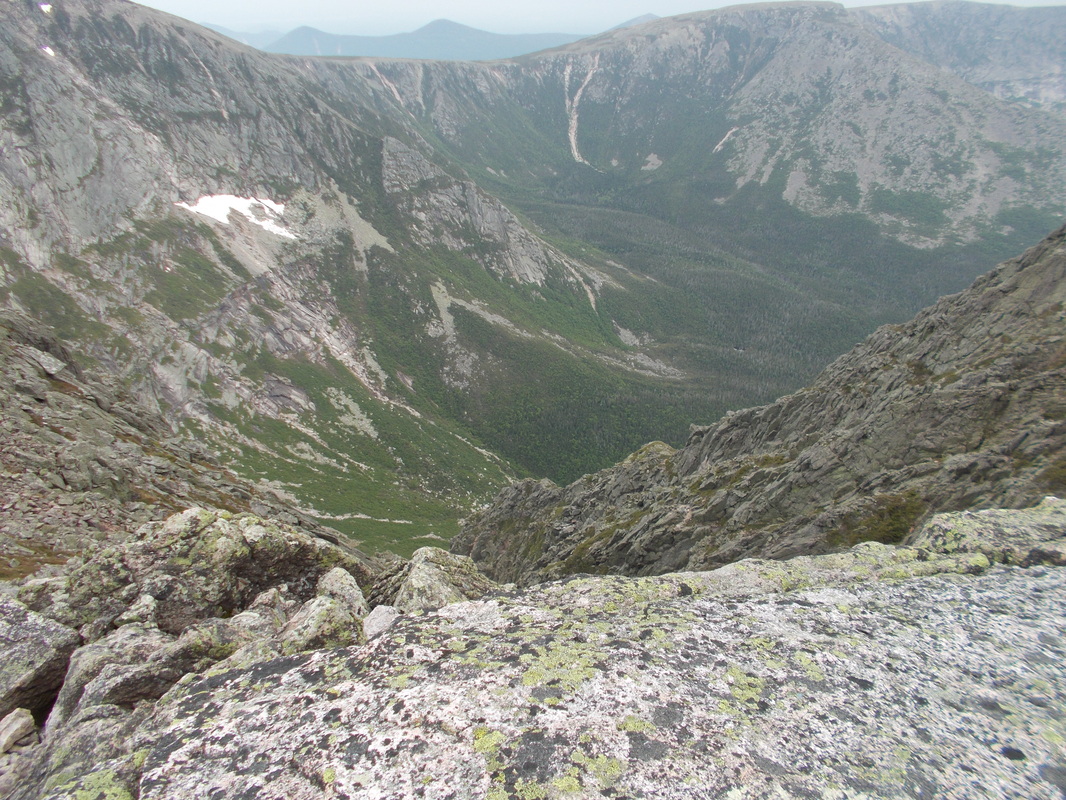



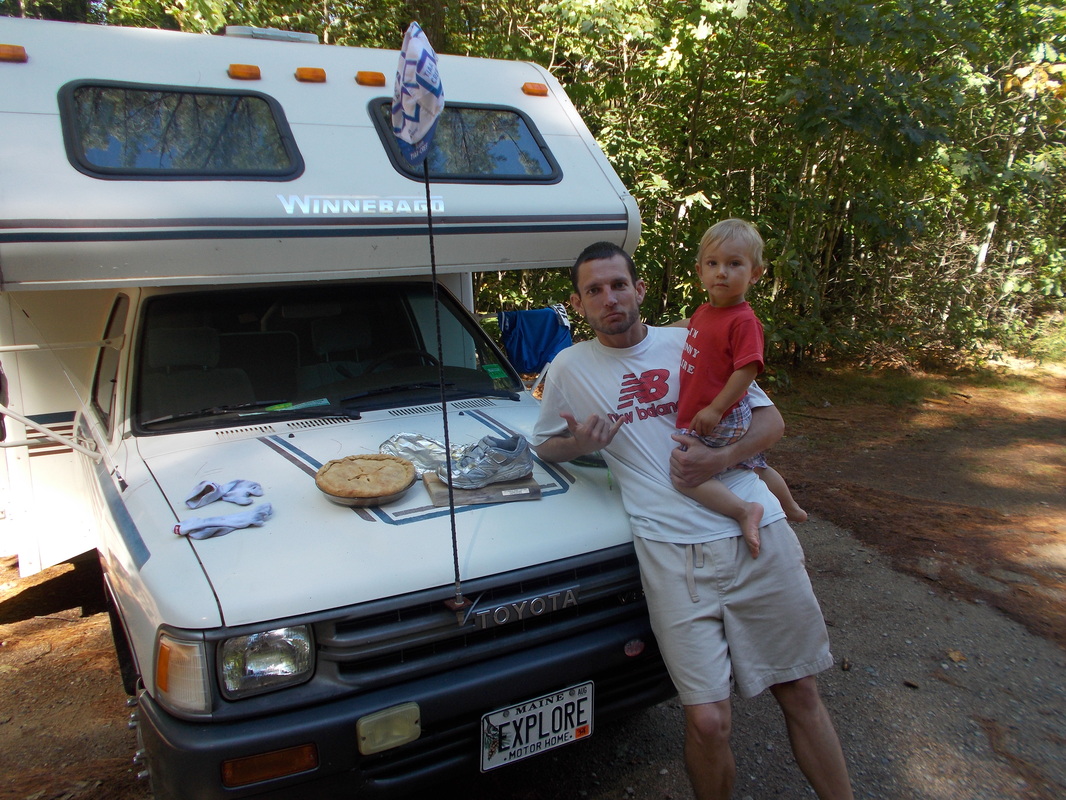
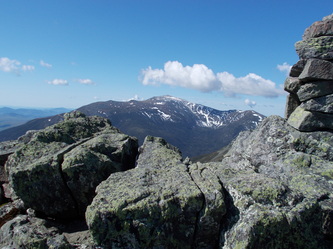
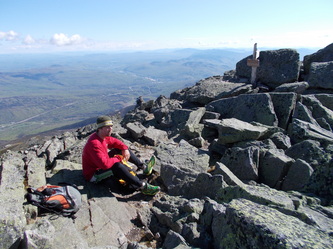
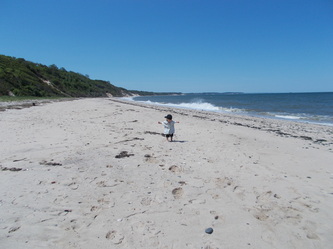
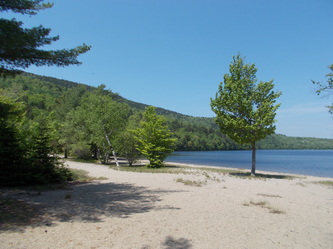
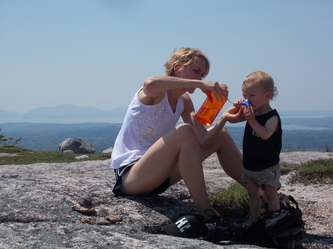

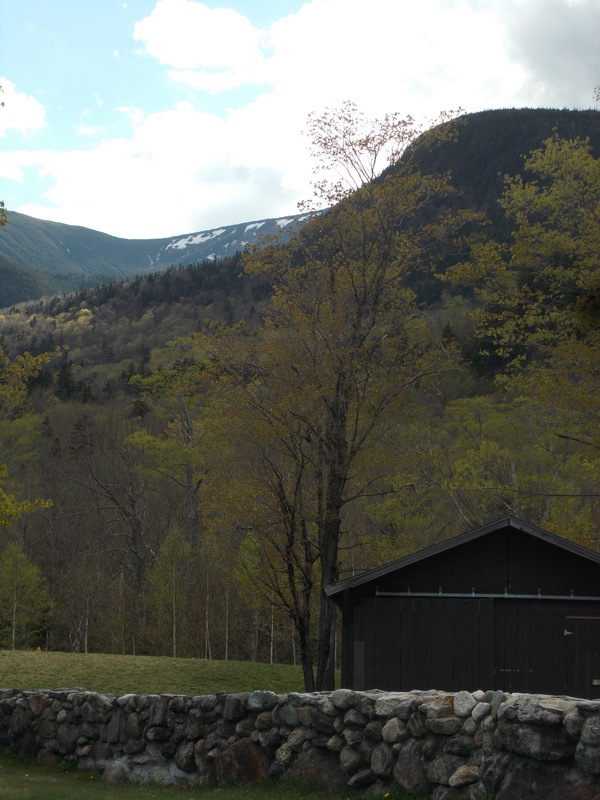
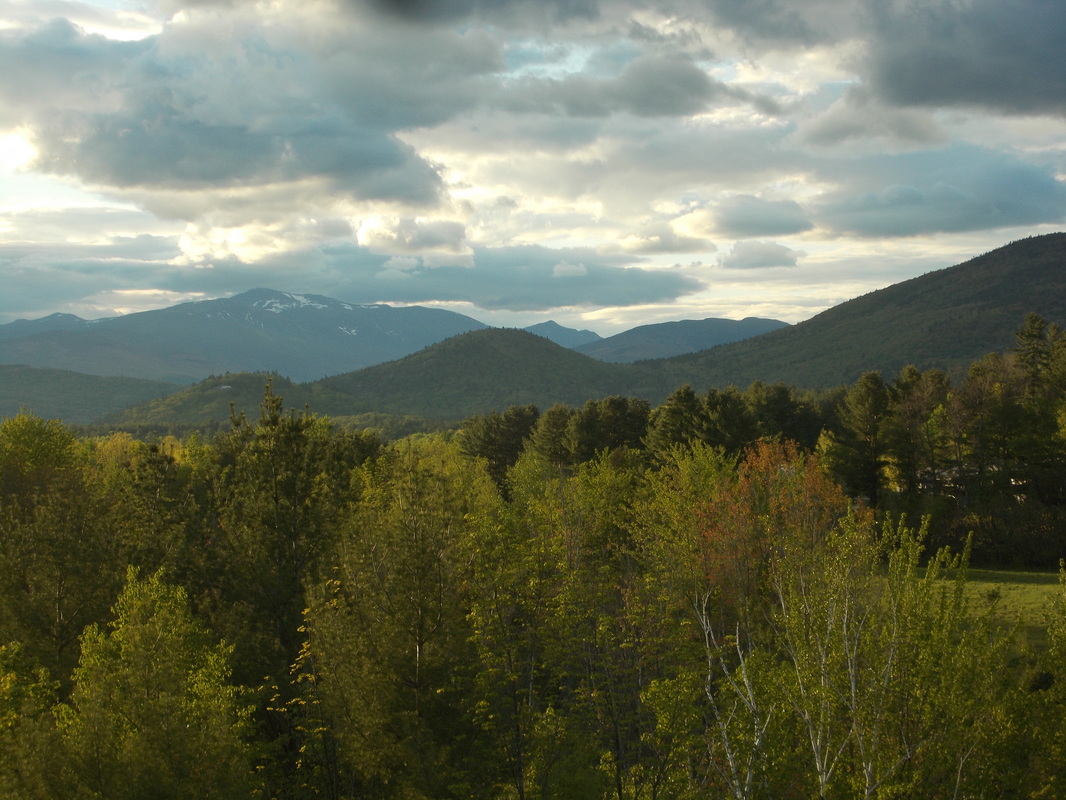
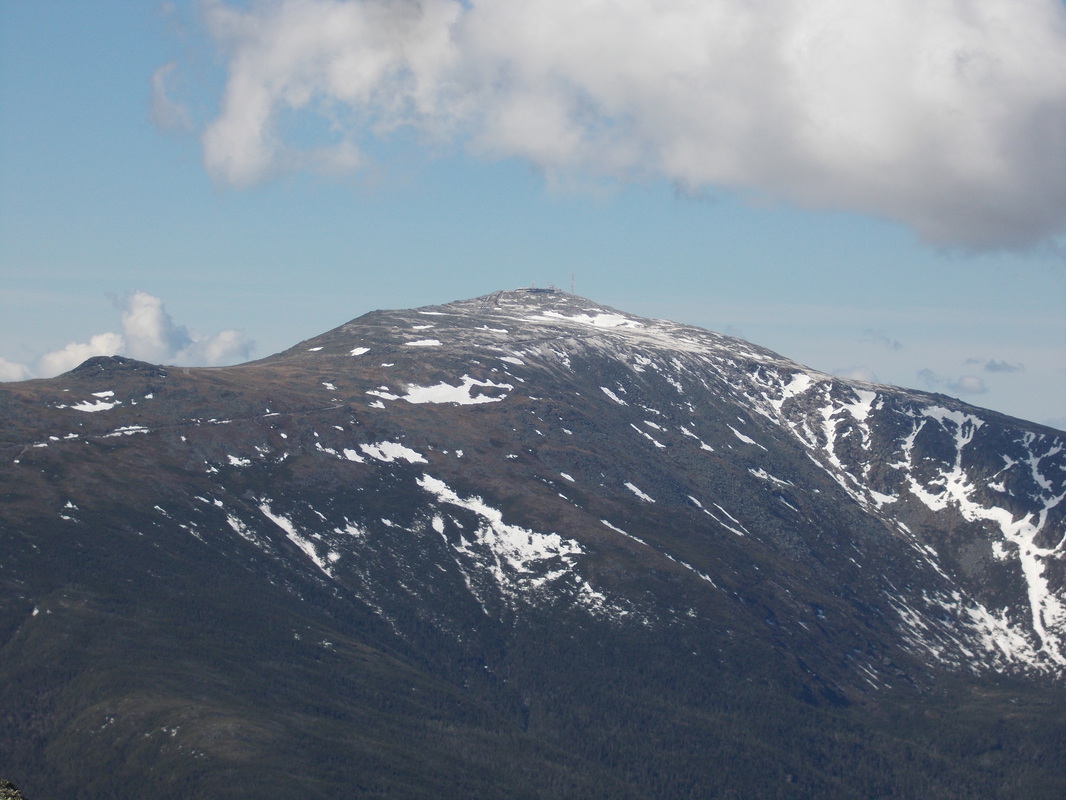




 RSS Feed
RSS Feed